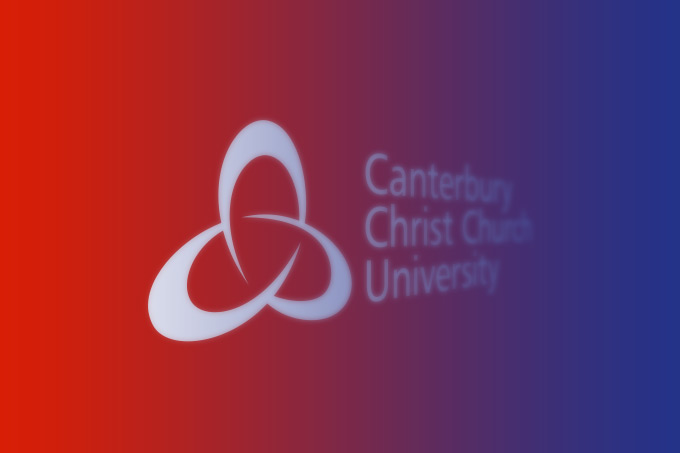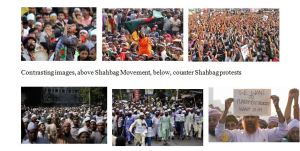This is the fourth in a series of five blog posts by Razia Shariff, a Doctoral candidate in the Politics and International Relations programme, as she conducts her field work on the Agency of Social Movements in Bangladesh
By Razia Shariff (PhD candidate)
From the literature the most appropriate definition for Shahbag as a social movement is by Tarrow as actions based on ‘dense social networks and effective connective structures which draw on legitimate, action orientated cultural frames that can sustain actions even in contact with powerful opponents’(2011: 16). The significance, in Shahbag, of ‘dense social networks’ and ‘action orientated cultural frames’ on its collective agency capability is something that is emerging as I wade through all my recorded interviews from Bangladesh, and will be explored in my research in more detail.
As with any social movement, there is a peak, and Shahbag was no exception. There is some dispute as to when the peak was with Shahbag, some of those interviewed suggest that this occurred within the first few days, most during the first few weeks, but all agree that it was the biggest movement since the liberation of Bangladesh in 1971 (see earlier posts for more background details.)
We can gain some insights from different social movement theories as to how Shahbag was formed e.g. resource mobilization and rational choice theorists, collective action and behaviour theorists, political opportunity structures and process theorists, even from identity theory or framing and cultural constructionist perspectives and more recently dynamics of contention approaches (read a critical overview in Karl-Dieter Opp, 2009). But they all seem to put the cart before the horse in relation to Shahbag by assuming that social movements have to be pre-planned and orchestrated, or mobilized within new political opportunity structures, or be pro-active in recruiting participants through cultural framing, or in developing collective contentions. What is interesting about the Shahbag movement is that all those interviewed repeated the fact that it was ‘spontaneous’, that it was ‘unplanned’, that it was not ‘being controlled’ by anyone or any organisation, that it was, if you like an ‘organic social movement’ or a ‘collective with agency capability’ sparked by the ‘perceived’ unjust judgement and verdict given for war crimes.
In fact there was a narrative by core activists, commentators, supporters and Government representatives regarding how to slow the movement down, to reduce the ongoing flow of people joining every day, to have an end to the day and night vigil in favour of a weekly gathering. The main reasons given were so that the roads leading to the Shahbag crossroads in Dhaka the capital could be reopened, to ease access to the local major hospitals, reduce the inconvenience for the public and the logistical and security burdens that were becoming unsustainable. Some suggest that things started to change once the main initial ‘dabi’ (demand) of an amendment to the ICT Act to allow the equal right of appeal by the prosecution was passed in parliament along with its application retrospectively to the case that triggered the initial spark for Shahbag (after the 14th February). Others that with the news of the savage killing of one of the bloggers on the 15th February, there was an initial increase in people joining Shahbag, but that with the counter propaganda after his death spread through the local madrassa’s (Islamic school attached to the mosques), that he was an atheist and had written anti-Islamic and insulting blogs about Islam, ordinary people started to be less proactive in participating in the Shahbag movement. Others suggest that there was a limit to how long a movement that big could be sustained day and night after the initial few weeks ‘honeymoon period’. Still others argue that as the internal tensions and conflict started to emerge between key activists in Shahbag, and there were conflicting views on what to demand next people started to disengage. Most people mention the key ‘spokespersons’ and their lack of experience, their ambitions and move to a less cooperative approach in decision making as the cause, along with their anti – Government, pro left statements (by the end of March). What cannot be ignored though is the violent, detructive, all male, counter Shahbag protest that descended on Dhaka on the 5th May organised by an Islamic Group (with suggested connections with extremist groups) at Shapla Chottor (the business district of Dhaka), a complete contrast to the non violent mass of people from all walks of life that were part of Shahbag. That marked the end of the Shahbag movement as a physical ‘scene’ (Johnston, 2009 Ch 11) in Dhaka city.
What is a common narrative is that Shahbag reclaimed the ‘spirit of liberation’ for the new generation, many of whom were not even born in 1971. There was a ‘re-imagining’ of the pro liberation spirit of secularism, democracy, nationalism and socialism through cultural, non violent protests by over 150,000 people at its peak in Shahbag Square in Dhaka, in 471 ‘public spaces’ across towns in Bangladesh, and in 26 countries, home to the Bengali diaspora around the world participating in the different activities. The movement was supported logistically by public institutions, the Government and all progressive left orientated political parties, businesses, civil society organisations and people showing their solidarity to the movement from the begining. It was spearheaded by the new generation using social media to give direct communication to the people, and built on the ongoing latent movements by cultural activists, pro liberation campaigners and media, and the Government’s election mandate to ensure the trial of the collaborators and war criminals from the 1971 Liberation War. It left a legacy in the hearts and minds of the Bengali people, that even after 40 years of injustice, justice could be achieved for the victims of the genocide of 1971.
The Shahbag Movement was very different from those experienced before in Bangladesh, and unique dimensions compared with those elsewhere around the world, and this is what I will be focusing on in my final blog next month.
 Politics
Politics Anna Vanaga
Anna Vanaga 1502
1502




hey Shariff,
first of all, thanks for your blog and your elaborations. I beg your opinion about the end of the movement. How would you classify actions after may 2013 like protests against Motiur Rahman Nizami’s (http://www.demotix.com/photo/5371192/motiur-rahman-nizamis-effigy-burn-shahbag-dhaka) or after the murder of Avijit Roy (https://twitter.com/ahmedehussain/status/571258328283611136) if not part of the Shahbag movement? Iam currently troubled with this question.
regards, Tom